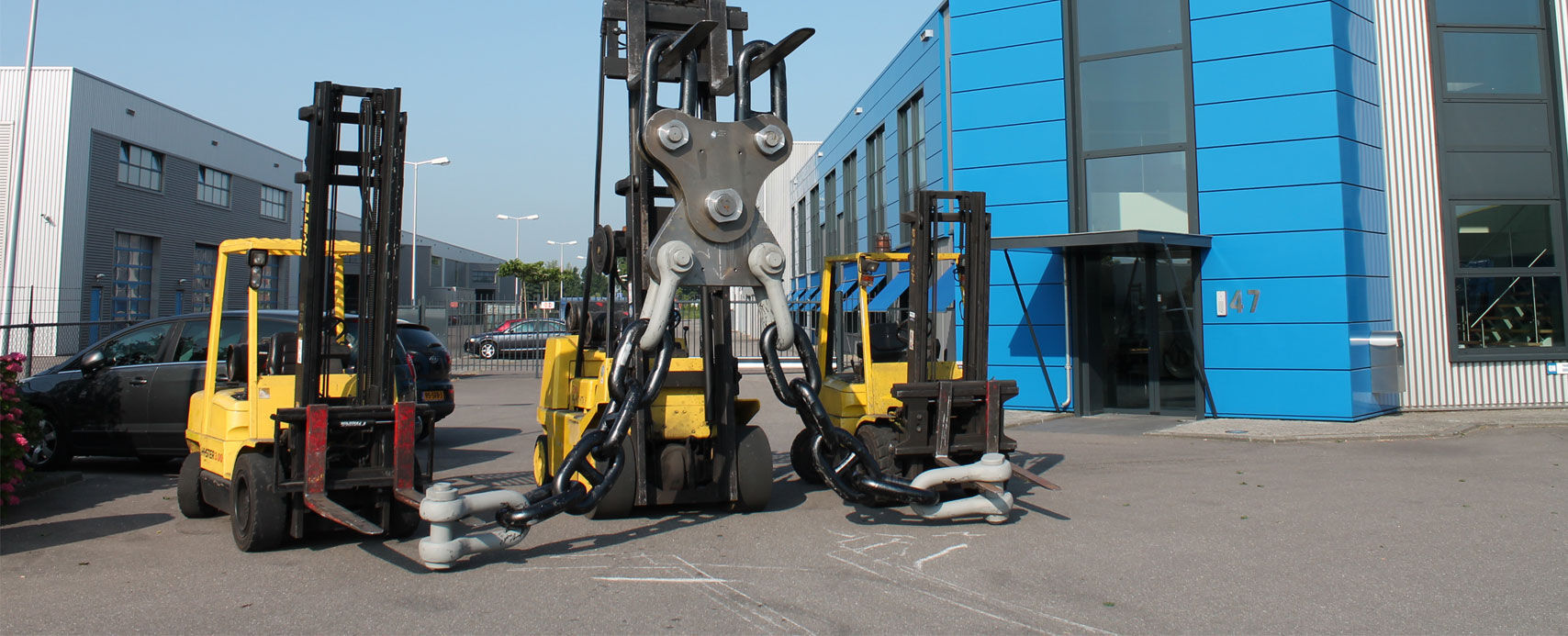POLICY STATEMENT
1. QUALITY AND HEALTH SAFETY AND ENVIRONMENT POLICY STATEMENT
Grofsmederij Nieuwkoop GN is a designer, manufacturer and stockholder of end fittings for wire, rope and chain used for applications in the offshore, maritime and construction industry.
GN delivers their products in time and complete according to international quality standards or client’s specifications. GN maintains a broad assortment, and the assortment is kept at stock level by in house manufacturing and purchasing of trade goods.
To achieve the above GN maintains a management system meeting the standards of the ISO 9001:2015, ISO14001:2015 and ISO 45001:2018. Measuring and improving the management structure and the embedded processes on a continuous basis. The key performance indicator in which all company processes are combined is the achievement of a high level of delivery reliability.
GN follows trends in the market establishing and maintaining an appropriate portfolio. New product design is backed by project management technique creating proper time to market initiatives with intermediate internal verification and final independent validation.
GN accepts its responsibility for providing a safe working environment and is committed to promoting and maintaining the highest relevant standards of quality, health, safety and environmental management within all Company activities.
To realize this vision, all GN operations and employees shall work together to protect the quality of the environment and the health and safety of our employees, stakeholders, and neighbours. GN has in place a Quality, Health, Safety and Environmental management system for all our activities that drives continual improvement.
The Management System outlines QHSE accountabilities to implement this Policy, and requires that we:
- Establish and maintain an QHSE Management System that facilitates a structured approach to the management of QHSE risk, with extra attention on heavy lifting, hot work, seizure dangers and eye-injury;
- Identify and manage risks to as low as reasonable possible where they have the potential to cause an accident, injury or illness to people, or unacceptable impacts on the environment or the community;
- Minimise where possible the use of non-renewable energy, and greenhouse emission. To realise this GN will invest in electrifying the production process and internal transportation where possible.
- Provide adequate human, financial and time resources to ensure the effectiveness and sustainability of the QHSE Management System;
- Provide safe work places and systems of work, empower employees and contractors to address unsafe or hazardous situations and carry out their work in a manner that does not present a risk to themselves, others or the environment obligations.
- Consult employees and representatives of employees on QHSE matters;
- Achieve and maintain compliance with these obligations;
- Keep up-to-date with relevant health, safety and environmental legislative obligations.
- Comply with compulsory Dutch Social security and Benefits regulations, and obligations.
Achieve and maintain compliance with these obligations:
- Set objectives and targets which promote the efficient use of energy and resources, the minimization of wastes and emissions and the prevention of pollution;
- Promote a safe culture that encourages people to proactively manage quality, health, safety and environmental risk through education, instruction, information and supervision;
- Clearly define and communicate staff and contractor responsibilities in relation to quality, health and safety;
- Require Contractors to manage QHSE using standards and practices that accord with this Policy;
- Monitor own operations and those of our contractors by evaluating performance against systems, procedures and regulations, report QHSE performance whilst providing a foundation for continuous improvement.
The Managing Director is accountable for communication of this policy and for compliance with its undertakings. The Operations Manager will ensure the effective implementation, management and monitoring of the QHSE Management System and its subsequent outcomes. While management carries these accountabilities and responsibilities, if they are to be fully effective, responsibility and accountability for quality, health, safety and environment must be owned by all employees and contractors of GN. This will be demonstrated by everyone showing awareness, understanding and compliance with regulatory and company QHSE standards and requirements.
2. POLICY DEVELOPMENT
The purpose of this Section of the QHSE Management System is to define the minimum requirements for the development, documentation, implementation, communication and review of QHSE Policies as part of the QHSE Management System.
To be effective, the QHSE Management System requires the participation and support of all personnel within the organization and to gain this, a strong commitment and leadership from senior management is essential. To articulate this senior management commitment, direction and leadership GN shall develop and document formal Policy Statements.
Policy Statements shall define GN’s intent, principles, objectives and commitment on a particular theme.
A QHSE policy signed by the Managing Director, clearly stating QHSE objectives and a commitment to improving QHSE shall be freely available, and up-dated on a regular basis as and when required but as a minimum every two years.
All GN QHSE Policy Statements shall be developed and reviewed in consultation with GN staff to ensure that all staff within the organization have a sense of ownership of the Policy Statements
3. CONTENT
The content of the QHSE Policy should be made up of guiding statements and principles that are flexible enough to cover GN as a whole rather than being prescriptive in nature.
GN’s Policy Statements shall, at a minimum, meet the following requirements:
- Be appropriate and relevant to the nature and level of the organizations risks and operations;
- Be focused on the proactive management of the organization;
- Be focused on continual improvement of the organization and the organization’s performance;
- Commit to the use of a consultative approach to management
- Recognize and accept the need for compliance with all applicable laws, contractual requirements and community expectations; and include commitments to the establishment of measurable objects and targets.

